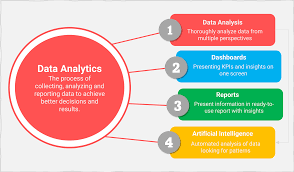Data Analysis Tools and Techniques in Research
In today’s digital age, data analysis plays a crucial role in research across various fields. Researchers rely on data analysis tools and techniques to extract meaningful insights from large datasets, uncover patterns, and make informed decisions based on evidence.
There are several data analysis tools available that cater to different research needs. From statistical software like SPSS and R to programming languages such as Python and MATLAB, researchers have a wide range of options to choose from based on their expertise and the complexity of their data.
One of the key techniques used in data analysis is exploratory data analysis (EDA), which involves visualizing data through graphs, charts, and summary statistics to understand its underlying patterns and relationships. EDA helps researchers identify outliers, missing values, and trends that can guide further analysis.
Another important technique is hypothesis testing, where researchers use statistical tests to determine whether there is a significant relationship between variables or if an observed effect is due to chance. Hypothesis testing helps validate research findings and draw reliable conclusions.
Machine learning algorithms are also widely used in research for predictive modelling, clustering, classification, and anomaly detection. These algorithms enable researchers to build models that can make predictions or classify new data based on patterns identified in the training dataset.
Overall, data analysis tools and techniques are essential for conducting rigorous research, drawing meaningful conclusions, and advancing knowledge in various fields. By harnessing the power of data analysis, researchers can uncover hidden insights that can lead to groundbreaking discoveries and innovations.
The Four Cornerstones of Data Analysis Techniques
The Role of Data Analysis Tools in Research Methodology
4. A Guide to the Four Fundamental Analysis Tools in Research
- What is data analysis tools and techniques?
- What are the four techniques for data analysis?
- What are data analysis tools in research?
- What are the 4 analysis tools?
What is data analysis tools and techniques?
Data analysis tools and techniques refer to the methods and software used by researchers to process, interpret, and derive insights from data in their research projects. These tools can range from statistical software like SPSS and R to programming languages such as Python and MATLAB. Techniques such as exploratory data analysis (EDA), hypothesis testing, and machine learning algorithms are employed to uncover patterns, relationships, and trends within datasets, enabling researchers to make informed decisions based on evidence. Data analysis tools and techniques play a vital role in modern research by facilitating the extraction of meaningful information from complex datasets and guiding researchers towards reliable conclusions.
What are the four techniques for data analysis?
In the realm of data analysis, researchers commonly employ four fundamental techniques to extract meaningful insights from datasets: descriptive statistics, inferential statistics, exploratory data analysis (EDA), and predictive analytics. Descriptive statistics involve summarising and presenting data in a meaningful way, providing an overview of key characteristics such as central tendency and variability. Inferential statistics help researchers draw conclusions or make predictions about a population based on sample data. Exploratory data analysis (EDA) aims to uncover patterns and relationships within the data through visualisation techniques. Predictive analytics utilises statistical algorithms to forecast future trends or outcomes based on historical data patterns. These four techniques form the cornerstone of effective data analysis in research, enabling researchers to derive valuable insights and make informed decisions based on evidence.
What are data analysis tools in research?
Data analysis tools in research refer to software, programming languages, and techniques used by researchers to process, analyse, and interpret data collected during their studies. These tools help researchers uncover patterns, trends, and relationships within datasets, enabling them to draw meaningful conclusions and make informed decisions based on evidence. From statistical software like SPSS and R to machine learning algorithms in Python and MATLAB, data analysis tools play a crucial role in modern research across various disciplines by providing researchers with the means to extract valuable insights from complex datasets.
What are the 4 analysis tools?
When it comes to data analysis tools in research, there are four key tools that are commonly used by researchers: statistical software such as SPSS and R, programming languages like Python and MATLAB, exploratory data analysis techniques for visualizing data patterns, and hypothesis testing methods for validating research findings. These tools play a vital role in helping researchers extract insights from data, make informed decisions based on evidence, and advance knowledge in their respective fields.

No Responses